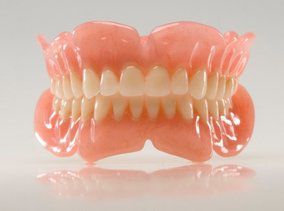RESTORATIVE
Bridges
Dental bridges are a great way to replace missing teeth. Your existing teeth are used to literally create a bridge to cross the area where your tooth is missing. Bridges can be made from gold, metal alloys, or porcelain to ensure that they are strong and durable.
The process of creating a bridge begins by creating abutments out of your existing teeth where the bridge will be attached. The existing teeth are recontoured to provide a base for the bridge. After the abutments have been created, an impression or digital image is obtained of the area which is sent to a dental lab. The lab is able to use the model fabricated from the impression to create a bridge that will fit properly and feel as close to your natural teeth as possible. The bridge consists of one crown on each end to place on the abutments and a pontic, which is the new tooth that replaces your missing tooth.
We will fit you with a temporary bridge while we wait for the lab to fabricate your permanent bridge. This will protect the abutments and look more appealing than having a missing tooth. When the permanent bridge has been created, you will have a follow up visit to seat the bridge. It will be placed on the abutments and the dentist will then cement it into place.
The bridge may take a little while to get used to, but after a few days it should feel like you have your own teeth back again. You should eat soft foods for the first few days after having your bridge placed. After the initial phase, you will be able to eat almost anything, within reason, that you want with no issues.
If you are missing a tooth you should strongly consider having it replaced. Besides the esthetic disadvantage of missing a tooth, it could also cause structural changes to your mouth and jaw due to abnormal tooth shifting, as well as making it difficult to eat or speak properly. Set up an appointment today to restore your smile.
Crowns
Over time our teeth begin to weaken and become more susceptible to problems such as decay, cracks, discoloration, excessive wear due to bruxism and other reasons, especially if there have been many fillings placed in the past. If you feel your smile isn’t what it once was, crowns can help you recover your smile. If your dentist notices that a tooth is decayed or seems weakened or cracked a crown may be necessary to restore the tooth predictably. In cases like this a filling or bonding will not be sufficient.
Crowns can be made from porcelain, porcelain fused to metal, or a full gold crown. To maintain a natural look and feel a porcelain finished crown is best, as it can be matched to the shade of your other teeth. This will allow it to blend in and appear just like one of your natural teeth.
The process of placing a crown in our office, because of our state of the art CEREC technology, usually can be accomplished in only one visit, unlike what has historically been 2-3 visits.. The tooth will be reshaped to accommodate the thickness of the crown, and a digital image will be obtained. From this image a crown is designed through the use of software which shapes the crown to fit both on the tooth being restored and in the space available between the adjacent teeth and against the tooth opposing it.
The crown is then milled to perfectly fit the prepared tooth out of a solid block of porcelain which is the same shade as the adjacent teeth and then the crown will be placed using a special cement to chemically bond it in place. When you look in the mirror, you will see your old smile back. These crowns are extremely strong and durable and will give you many years of service. You should care for it as you would any of your other teeth with regular brushing and flossing. Call us today if you would like to learn more about how crowns can help restore your smile.
Dentures
Dentures are a replacement for missing teeth that can be removed and put back into your mouth as you please. Depending on each individual patient case, they may receive full or partial dentures. Full dentures are used when all of the natural teeth have been lost and replaced with a full set of dentures. There are two types of full dentures.
Conventional Full Dentures - This is when all the teeth are removed and the tissue is given time to heal before the dentures are placed. It could take a few months for the gum tissue to heal completely, and during this time you will be without teeth.
Immediate Full Dentures - Prior to having your teeth removed, your dentist takes measurements and has dentures fitted for your mouth. After removing the teeth, the dentures are immediately placed in your mouth. The benefit is that you do not have to spend any time without teeth. You will, however, need to have follow-up visits to reline your dentures because the jaw bone will change shape as your mouth heals. This is usually done after three to four weeks following extractions and again around the three to four month mark.
Partial dentures are another option when not all of your teeth need to be removed. This is similar to a bridge, but is a removable solution.
Even though dentures are not real teeth, you should care for them like they are. You should brush them to remove plaque and food particles which they will accumulate just like your natural teeth. After they have been removed and cleaned, you should place them directly into room temperature water or a denture cleaning solution. Never use hot water because it could warp the dentures. Always be careful when handling them so as not to drop them. Also, never try to adjust your dentures yourself. You could ruin them, so you should always seek assistance from your dentist if they feel uncomfortable or loose.




